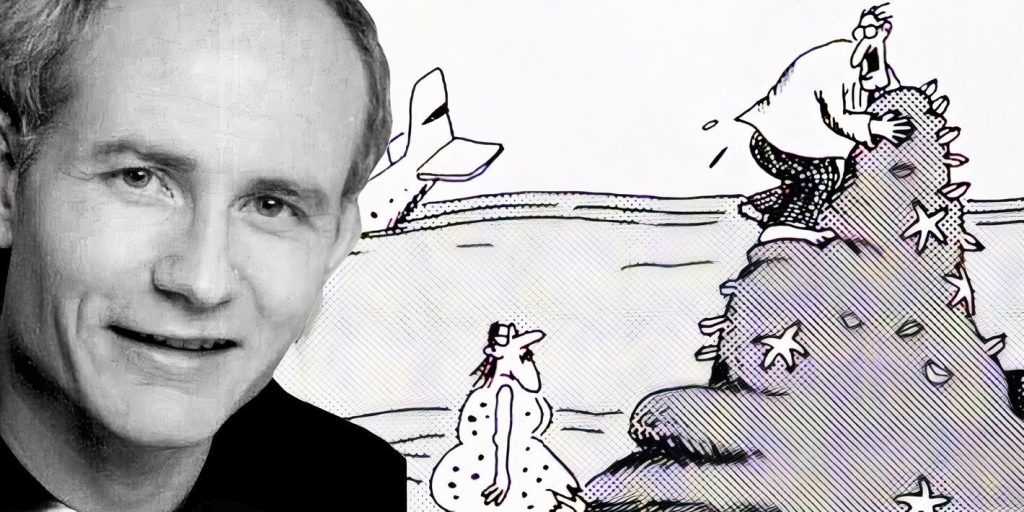
Gary Larson’s Unique Humor Explained Through a Single Far Side Joke
In the realm of comic strips, few have captured the imagination as distinctly as Gary Larson’s The Far Side. Known for its surreal punchlines and off-kilter humor, Larson’s work often leaves readers scratching their heads, and an analysis of one particular cartoon delves into the essence of his comedic genius.
In a thoughtful breakdown published in The Complete Far Side Volume Two, Larson sheds light on a cartoon that, while initially perceived as perplexing, actually offers a wealth of humor — provided one knows where to look. This exercise doesn’t merely reveal Larson’s comedic sensibilities; it also highlights the critical role of the reader in interpreting The Far Side, where the success or failure of a joke pivots on the audience’s understanding.
Consider Larson’s “Low Tide/High Tide” gag first published on January 15, 1991. The scene depicts two stranded characters clinging to a rock amidst turbulent seas, with the tail of a sinking airplane ominously visible beneath the waves. The dialogue from the character at the top of the rock, expressing optimistic notions about an abundant supply of shellfish, might lead to a chuckle on the surface. However, the true punchline hinges on a particular set of knowledge regarding tidal patterns — knowledge that many readers may not possess.
Larson poignantly acknowledges this disconnect when he recalls how even marine biologists struggled to grasp the comic’s nuance. It becomes clear that the humor doesn’t just reside in the absurdity of the moment—the couple’s impending doom framed by the ludicrousness of their predicament. Rather, it emerges when the reader fills in a vital piece of information, transforming the cartoon into a sly commentary on perception and expectation.
The beauty of Larson’s work is that it demands engagement. A successful Far Side comic is not just the result of a quirkily drawn scene; it thrives on an interactive relationship between creator and audience. Larson’s deliberate obscurity serves to challenge the reader—are we missing something crucial that enables the joke to land? This interactive experience enriches the laughter, making the absurdity even more poignant.
In exploring the intricacies of Larson’s humor, what emerges is a notion that resonates for fans across generations. The Far Side challenges conventional expectations of joke-telling, presenting an almost musical quality: sometimes, what is left unsaid or hidden beneath the surface holds the essence of humor.
As readers revisit Larson’s oeuvre, they may find that time brings fresh insights. What once puzzled becomes clear upon reflection, inviting a deeper appreciation of a craft that deftly balances darkness and humor. Thus, with each reading, The Far Side offers new revelations—not only about Larson’s distinctive style but also about the reader’s evolving interaction with his distinctive world.
In conclusion, while not every joke may elicit an immediate laugh, the intricate dance of obscurity and revelation in Larson’s work ensures that the prospect of humor is always lurking in the shadows, waiting for the right moment to emerge from the tide.





